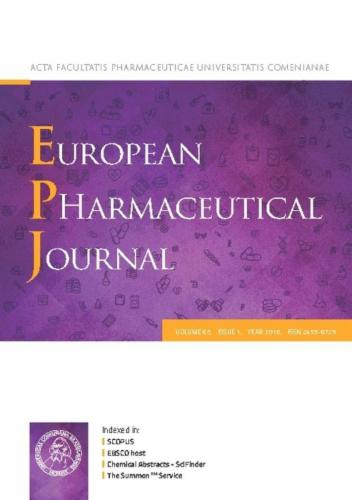依舒康唑在血液病患者中的群体药代动力学:模型信息精确给药的意义。
IF 4.7
3区 医学
Q1 PHARMACOLOGY & PHARMACY
引用次数: 0
摘要
背景:异戊康唑是一种广谱抗真菌药物,用于治疗侵袭性真菌感染(IFIs)。由于伴随的临床和治疗因素可能影响药物暴露,其药代动力学可能在血液病患者中受到影响。本研究的目的是建立成人血液病患者异戊康唑的群体药代动力学(popPK)模型,以支持模型信息的精确给药。材料和方法:前瞻性、非对照研究在接受isavuconazole治疗IFIs的成人血液病患者中进行,并通过治疗药物监测(TDM)项目进行随访。采用超高效液相色谱(UPLC)和紫外检测器对异戊康唑的血药浓度进行定量分析。采用NONMEM v.7.5.0软件建立popPK模型。模拟是基于最终模型来评估不同生理变量对药物暴露影响的差异。结果:具有一级吸收和消除的单室模型充分描述了52例患者的121种异戊康唑浓度。体表面积(BSA)和血清白蛋白(ALB)显著影响药物清除率。最终的popPK模型显示出良好的精度、鲁棒性和预测性能,支持其在该人群中个体化给药。结论:BSA和ALB是影响成人血液病患者异戊康唑清除率的协变量。需要进一步的研究来更好地描述异磺康唑的吸收及其对剂量建议的影响,特别是对建议的较高剂量的影响。本文章由计算机程序翻译,如有差异,请以英文原文为准。

Population pharmacokinetics of isavuconazole in hematologic patients: implications for model-informed precision dosing
Background
Isavuconazole is a broad-spectrum antifungal agent used for treating invasive fungal infections (IFIs). Its pharmacokinetics may be impacted in hematologic patients due to concomitant clinical and therapeutic factors potentially affecting drug exposure. The aim of this study was to develop a population pharmacokinetic (popPK) model of isavuconazole in adult hematologic patients to support model-informed precision dosing.
Materials and method
Prospective, non-controlled study performed in adult hematologic patients receiving isavuconazole for IFIs and followed up by a therapeutic drug monitoring (TDM) program. Isavuconazole plasma concentrations were quantified using an ultra-high-performance liquid chromatography (UPLC) with UV detector. A popPK model was developed using NONMEM v.7.5.0. Simulations were based on the final model to evaluate the differences across physiological variables with impact on drug exposure.
Results
A one-compartment model with first-order absorption and elimination described adequately 121 isavuconazole concentrations from 52 patients. Body surface area (BSA) and serum albumin (ALB) significantly influenced drug clearance. The final popPK model showed good precision, robustness, and predictive performance, supporting its use for individualized isavuconazole dosing in this population.
Conclusions
BSA and serum ALB were identified as covariates influencing isavuconazole clearance in adult hematologic patients. Further studies are needed to better characterize the absorption of isavuconazole and implications on dosage recommendations, especially for higher proposed doses.
求助全文
通过发布文献求助,成功后即可免费获取论文全文。
去求助
来源期刊
CiteScore
9.60
自引率
2.20%
发文量
248
审稿时长
50 days
期刊介绍:
The journal publishes research articles, review articles and scientific commentaries on all aspects of the pharmaceutical sciences with emphasis on conceptual novelty and scientific quality. The Editors welcome articles in this multidisciplinary field, with a focus on topics relevant for drug discovery and development.
More specifically, the Journal publishes reports on medicinal chemistry, pharmacology, drug absorption and metabolism, pharmacokinetics and pharmacodynamics, pharmaceutical and biomedical analysis, drug delivery (including gene delivery), drug targeting, pharmaceutical technology, pharmaceutical biotechnology and clinical drug evaluation. The journal will typically not give priority to manuscripts focusing primarily on organic synthesis, natural products, adaptation of analytical approaches, or discussions pertaining to drug policy making.
Scientific commentaries and review articles are generally by invitation only or by consent of the Editors. Proceedings of scientific meetings may be published as special issues or supplements to the Journal.

 求助内容:
求助内容: 应助结果提醒方式:
应助结果提醒方式:


